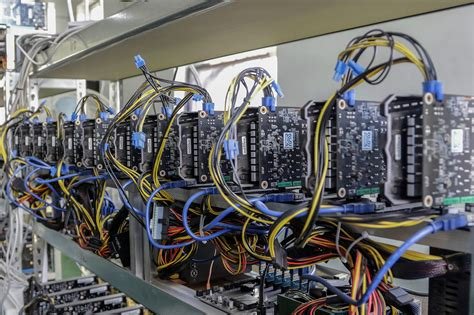Understanding Bitcoin Node Pruning and Its Impact
Bitcoin nodes are the heart of the decentralized blockchain, responsible for verifying transactions, updating the blockchain, and connecting users. However, as the network grows, so does the demand for storage space, leading to node pruning. In this article, we will dive deeper into why a Bitcoin node is pruned to 550 MB, which takes up a staggering 10 GB.
What is Node Pruning?
Node pruning refers to the process of reducing the amount of data stored on a Bitcoin node. This is done to conserve storage space and reduce the load on each node. The goal is to allocate enough resources for other nodes on the network to maintain their functionality without overloading individual nodes.
Why 550 MB per node?
The pruned size of 550 MB may seem unusual, especially when you consider that the storage requirements of a typical Bitcoin node are usually around 100 GB. However, this is due to several factors:
- Data Compression
: Bitcoin nodes employ data compression algorithms to reduce the amount of disk space needed. This means that even small files can be significantly compressed, allowing for more efficient storage.
- Indexing and Forks: The Bitcoin network includes a large index file (blockchain state) that contains metadata about all blocks in the blockchain. This index is constantly updated to reflect changes in the network. A reduced size allows for faster indexing and reduces the load on nodes.
- Cache efficiency: Bitcoin nodes have built-in caching mechanisms, which store frequently accessed data in memory rather than on disk. These caches can help reduce the amount of data stored, resulting in a lower overall storage requirement.
The use of 10 GB
The seemingly huge 10 GB size taken up by the pruned node is likely due to several factors:
- Additional storage for forks: Bitcoin forks are used to create new versions of the blockchain (e.g. Bitcoin Cash). These forked blocks require their own indexing and storage, which can lead to higher storage requirements.
- Indexing data: The index file itself requires significant storage space due to its large size (typically around 1-2 GB).
- Data storage for fork indexes: Once a node has forked, it may need to store additional data related to the new blockchain variant to maintain functionality and avoid conflicts with other forks.
Conclusion

Bitcoin node pruning is an essential process that ensures the network can run efficiently without overloading individual nodes. The 550 MB size pruned for each Bitcoin node is a result of the data compression, indexing, fork management, and cache efficiency strategies employed by the Bitcoin protocol. While it may seem excessive at first glance, this storage allocation is necessary to maintain the integrity and security of the decentralized blockchain.
Tips to minimize node pruning
If you are running multiple Bitcoin nodes, keep these tips in mind to minimize node pruning:
- Use a modern operating system with optimized disk management.
- Regularly update your node software to ensure you have the latest pruning algorithms.
- Consider using a storage pool or cloud storage service to reduce the load on individual nodes.
By understanding how Bitcoin nodes manage their storage space and taking advantage of efficient practices, users can help maintain the stability of the decentralized network.

